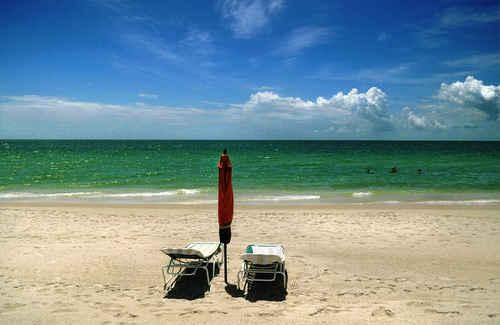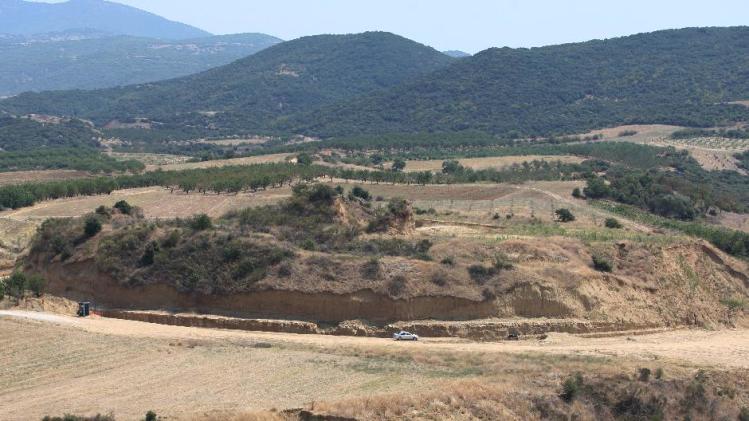
Villagers
from the Rumao Island community carry part of their catch of arapaima
or pirarucu, the largest freshwater fish species in South America and
one of the largest in the world, after fishing in a branch of the
Solimoes river, one of the main tributaries of the Amazon, in the
Mamiraua nature reserve near Fonte Boa about 600 km (373 miles) west of
Manaus, November 25, 2013. Catching the arapaima, a fish that is sought
after for its meat and is considered by biologists to be a living
fossil, is only allowed once a year by Brazil's environmental protection
agency. The minimum size allowed for a fisherman to keep an arapaima is
1.5 meters (4.9 feet). Picture taken November 25, 2013. (REUTERS/Bruno
Kelly)
Measuring 10 feet (3
meters) long and weighing in at more than 400 pounds (180 kilograms),
it's hard to imagine that the arapaima, the largest fish in the Amazon
River basin, could ever go missing. But these huge fish are quickly
disappearing from Brazilian waterways, according to a new study.
A recent survey of fishing communities in the state
of Amazonas, Brazil, found that the arapaima is already extinct in some
parts of the Amazon basin. In other parts of the Amazon, its numbers are rapidly dwindling.
However,
the researchers also uncovered some good news: In communities where
arapaima fishing is regulated, the species is actually thriving, giving
the researchers hope that conservation of the species is still possible.
Commonly known as pirarucu, arapaima (
Arapaima gigas)
are the largest freshwater fish in South America. They're unique among
fishes for their ability to breathe air — a feat made possible by a
primitive lung, which they possess in conjunction with a gill system
that allows them to breathe underwater. The fish developed this function
because they typically live in oxygen-poor waterways,
according to the Tennessee Aquarium, which is home to several arapaima.
But while this supplemental breathing technique helps the fish survive in its native habitat, it also makes the arapaima much easier to catch, according to the researchers.
"Arapaima
spawn on the edges of floodplain forests and come to the surface to
breathe every 5 to 15 minutes, when they are easily located and
harpooned by fishers using homemade canoes," said Caroline Arantes, a
doctoral student in wildlife and fisheries science at Texas A&M
University in College Station, who helped conduct the study.
Fishy policies
Of the five known species of arapaima,
three have not been observed in the wild in decades, according to study
co-author Donald Stewart, a professor with the State University of New
York at Syracuse's College of Environmental Science. Stewart said that
all five species dominated fisheries in the Amazon just a century ago.
A commercially important species, arapaima are traditionally fished by local Amazonian communities,
a practice that's largely unregulated, the researchers said. To find
out how this lack of regulation might be affecting the giant fish, the
researchers interviewed local fishers operating within a 650-square-mile
(1,683 square kilometers) floodplain in northwestern Brazil.
In
19 percent of the 81 communities surveyed, the arapaima was found to be
already extinct. And the giant fish's numbers are depleted, or
approaching extinction, in 57 percent of the communities surveyed. In 17
percent of the communities, the fish were deemed "overexploited,"
according to the researchers.
"Fishers
continue to harvest arapaima regardless of low population densities,"
said study leader Leandro Castello, an assistant professor of fisheries
at Virginia Tech's College of Natural Resources and Environment, in
Blacksburg.
But the blame for
the arapaima's dwindling numbers doesn't just fall on local fishing
communities. Policymakers in Brazil may also be responsible, the
researchers suggest. Government officials in the region tend to follow a
"bioeconomic" line of thinking, which may have doomed the arapaima, the
researchers said.
"Bioeconomic
thinking has predicted that scarcity would drive up fishing costs,
which would increase price and help save depleted species," Castello
said. "If that prediction were true, extinctions induced by fishing would not exist, but that is not what has happened."
Fishing down
What
is happening in the Amazon River basin is in line with something
Castello and his colleagues call the "fishing-down" theory. This idea
helps explain how large, high-value, easy-to-catch fish — such as the
arapaima — can be fished to extinction.
In
communities where arapaima are scarce, local fishers stop hunting the
fish in traditional ways, such as with a harpoon. However, this doesn't
mean fishers aren't killing arapaima; they're simply killing them in a
different way.
These fishers
use gill nets to harvest smaller fish, including juvenile arapaima.
While local fishers don't necessarily catch the smaller arapaima on
purpose, by "fishing down" they still end up killing the fish and
further depleting the arapaima population.
But
there is a bright side to this sad fish tale, according to study
co-author David McGrath, a researcher with the Earth Innovation
Institute in San Francisco. In communities that have implemented fishing rules,
such as imposing a minimum capture size for arapaima and restricting
the use of gill nets, the density of arapaima is 100 times higher than
in places where no such rules exist.
"These communities are preventing further arapaima extinctions," McGrath said.
Unfortunately,
only 27 percent of the communities surveyed have management rules in
place for fishing arapaima. One community that does manage these fish,
Ilha de São Miguel, banned the use of gill nets two decades ago. It now
has the highest arapaima densities in the region, the researchers found.
But
regulations like those implemented by the community of Ilha de São
Miguel are not common in floodplain regions, Castello said. These areas,
he explained, suffer from widespread illegal fishing, a fact that he
worries could lead to fishing-induced extinctions for other Amazonian species.
Fixing the situation
Part
of the problem, Castello said, is a lack of economic alternatives for
the fishers who survive on the commercial trade of threatened fish
species. But the researchers said their findings demonstrate that it's
possible to save the arapaima from extinction without jeopardizing local
food supplies.
"Fisheries
productivity in Ilha de São Miguel is also the highest in the study
area," Castello said. "Cast nets are allowed because they are much more
selective, yet they yield abundant fishes for local consumption, so food
security for the community is not compromised."
This
bodes well for both fish and fishermen, said the researchers, who
believe that spreading the fishing practices of Ilha de São Miguel to
other areas of the Amazon could bring this unique species of fish back
from the brink.
"Many
previously overexploited arapaima populations are now booming due to
good management," Castello said. "The time has come to apply fishers'
ecological knowledge to assess populations, document practices and
trends, and solve fisheries problems through user participation in
management and conservation."
The
results of the study were published online today (Aug. 13) in the
journal Aquatic Conservation: Freshwater and Marine Ecosystems.






















